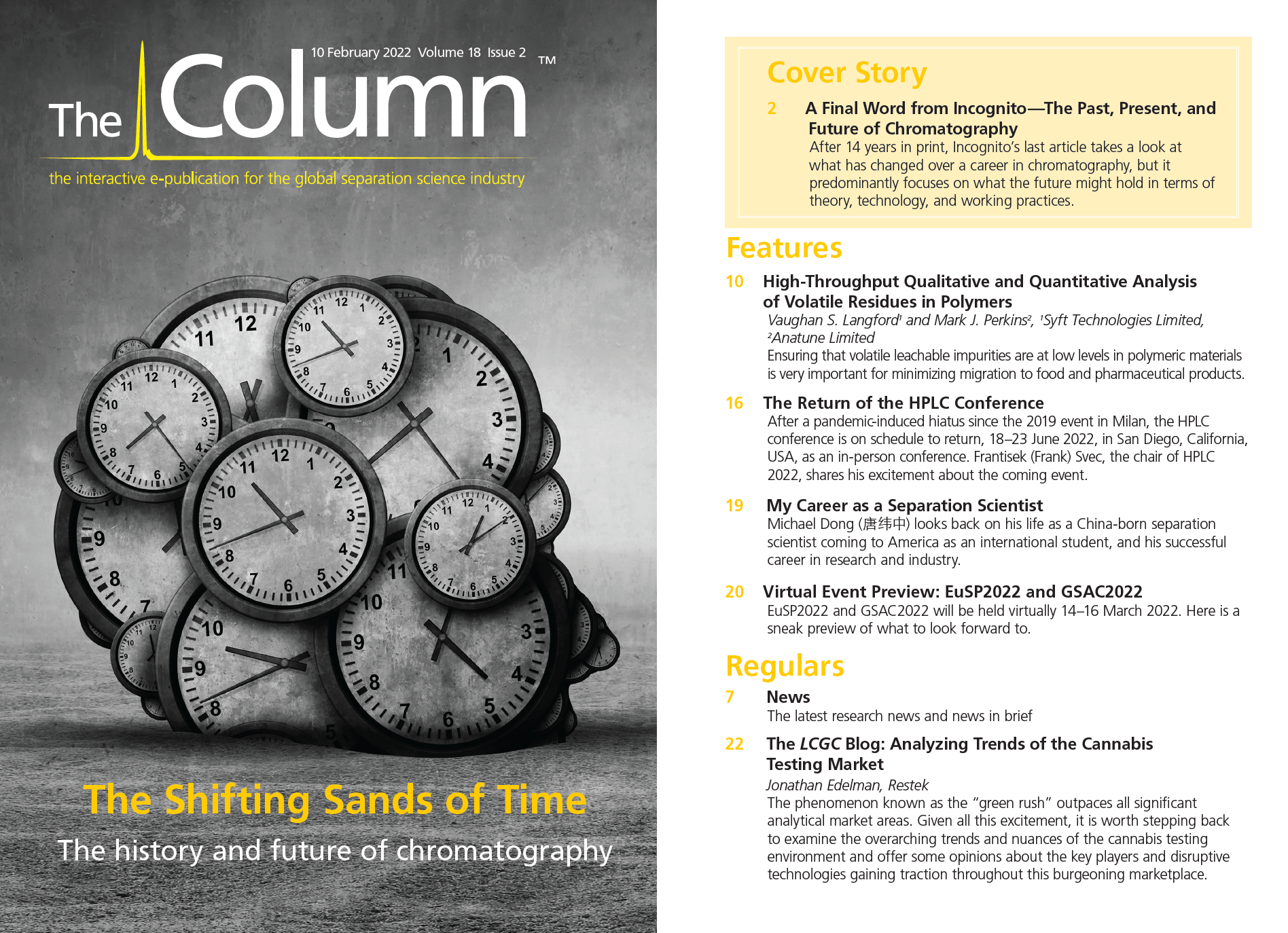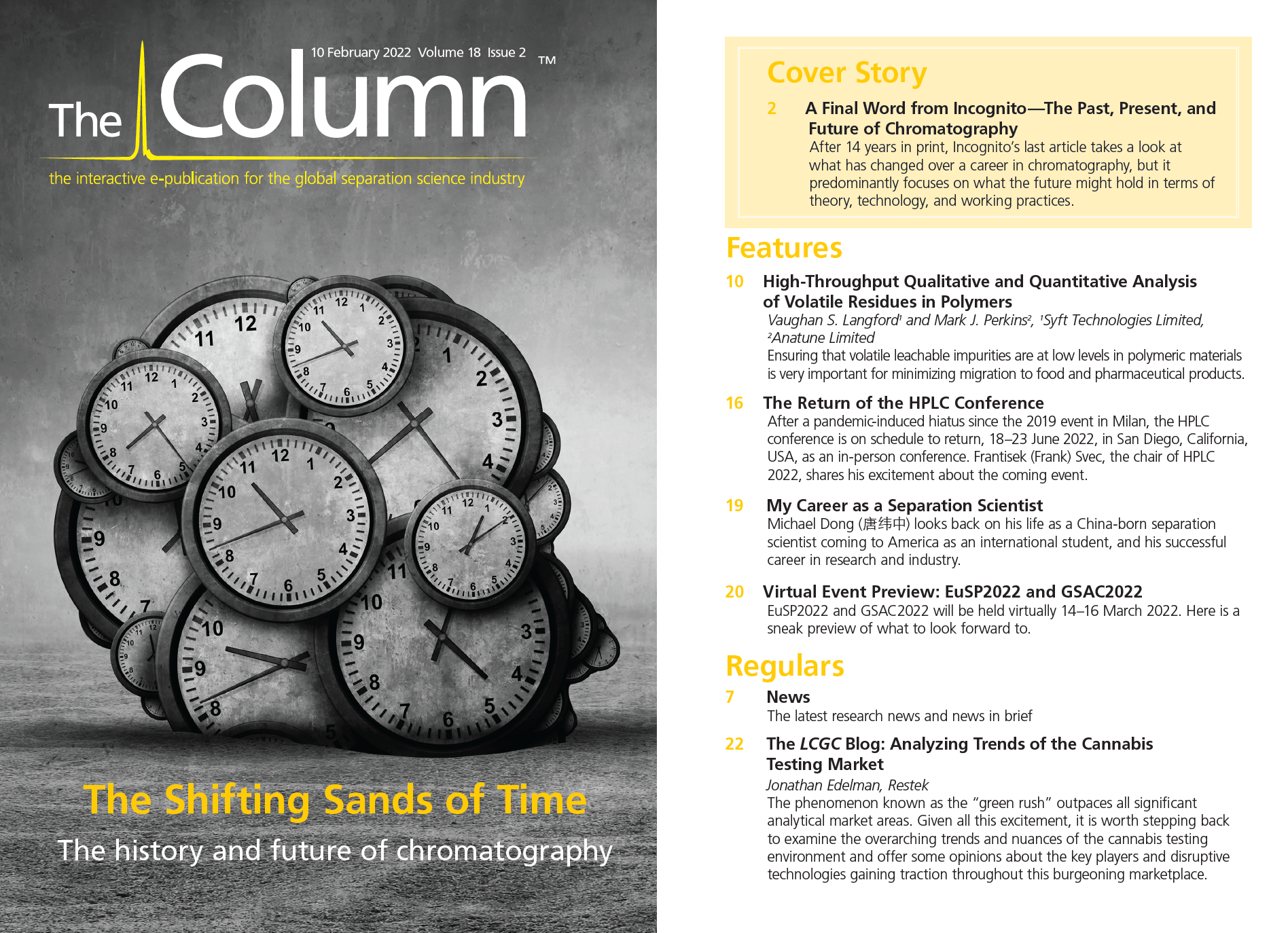Illicit Drug Analysis Using GC–IMS and Oral Fluids
Researchers from the University of Valencia have developed a gas chromatography-drift tube ion mobility spectrometry (GC–IMS) method for the analysis of illicit and psychoactive substances in oral fluids (1).
The determination of illicit drugs is needed across many industries, from toxicology reports in hospitals to traffic control or doping prevention in professional sports. Traditionally these determinations have been carried out through the analysis of urine and blood; however, each have issues associated with them. In the case of blood, the sampling procedure is quite invasive, whereas with urine there have been numerous incidents of falsification. Therefore, interest in alternative biological fluids has increased, with oral fluids emerging as one such target. The main advantages of oral fluids are the non-invasive sampling and the potential analysis of unmetabolized drugs.
Another important consideration is the technique used to analyze the oral fluids. Hyphenated mass spectrometry techniques, and especially liquid chromatography (LC)–MS/MS, have gained in popularity because of their selectivity, specificity, and sensitivity, but they require expensive instrumentation not accessible to all laboratories. Solid-phase extraction (SPE) or liquid-phase microextraction (LPME) followed by LC–MS and GC–MS are also possibilities, requiring slightly more in terms of sample preparation than the proposed method, which utilized a simple centrifugation step prior to injection.
Other limitations of GC–IMS were acknowledged by the researchers in terms of the method’s ability to identify unknown signals. There are no global available databases for the reduced ion mobility constants (K0), and therefore, for unequivocal identification, the MS spectra should be verified. This could be a major drawback to the method’s acceptance by possible end users. However, researchers also point to a recent database of K0 values that has been published with approximately 200 psychoactive compounds, including illicit and new psychoactive substances (2), which could be used to obtain preliminary information regarding unknown substances.
As such, researchers wanted to explore the possibility of utilizing GC–IMS to determine illicit and psychoactive substances in oral fluids. Amphetamine, methylone, α-PVP, ketamine, lidocaine, MPHP, cocaine, THJ-2201, and 5F-ADB were employed as model compounds in the study. The developed method was tested through the analysis of two oral fluid certified reference materials, with the obtained relative percentage errors lower than 8.4%. This indicated that the proposed GC–IMS procedure could be a reliable, selective, and sensitive technique for the determination of psychoactive substances in oral fluids.
References
- A. Denia et al., Talanta 238, 122966 (2022).
- S. Armenta, F.A. Esteve-Turrillas, and M. Alcalà, Anal. Methods 12, 1163–1181 (2020).

Determining Enhanced Sensitivity to Odors due to Anxiety-Associated Chemosignals with GC
May 8th 2025Based on their hypothesis that smelling anxiety chemosignals can, like visual anxiety induction, lead to an increase in odor sensitivity, a joint study between the University of Erlangen-Nuremberg (Erlangen, Germany) and the Fraunhofer Institute for Process Engineering and Packaging (Freising, Germany) combined behavioral experiments, odor profile analysis by a trained panel, and instrumental analysis of odorants (gas chromatography-olfactometry) and volatiles (gas chromatography-mass spectrometry).
Investigating 3D-Printable Stationary Phases in Liquid Chromatography
May 7th 20253D printing technology has potential in chromatography, but a major challenge is developing materials with both high porosity and robust mechanical properties. Recently, scientists compared the separation performances of eight different 3D printable stationary phases.
Detecting Hyper-Fast Chromatographic Peaks Using Ion Mobility Spectrometry
May 6th 2025Ion mobility spectrometers can detect trace compounds quickly, though they can face various issues with detecting certain peaks. University of Hannover scientists created a new system for resolving hyper-fast gas chromatography (GC) peaks.

.png&w=3840&q=75)

.png&w=3840&q=75)



.png&w=3840&q=75)



.png&w=3840&q=75)














